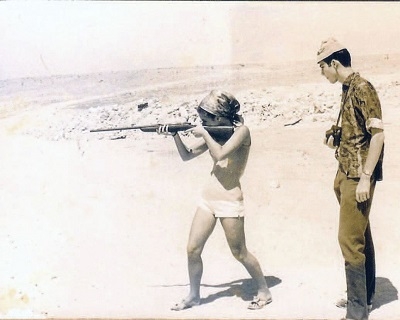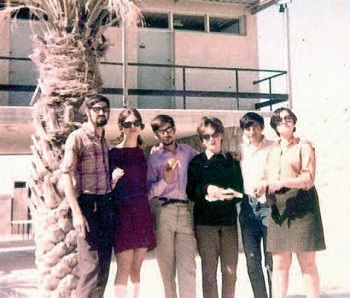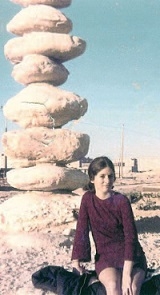Six Day War - Pandemonium of Wanting to Help
I was born in Leeds, England, and in 1966 graduated from Cambridge University with a degree in modern languages (French and Italian) and a desire to work my way around the world. I worked for a few months in the World Service of the BBC in London, before moving to Paris in early 1967. There I found a room to rent and a job translating for a patent lawyer. The world was my oyster.
A couple of months later, I found myself caught up in the growing tension in the Middle East. I came from an Orthodox Zionist family; in fact my late grandfather, Isaac Cohen, was one of the first Zionists in Sunderland, but ours was the Zionism of financial support rather than immigration. In my teens, I went to Habonim, where I enjoyed Israeli folk dancing and singing. In 1964, I came to Israel with some university friends in the summer vacation and spent a couple of weeks on a kibbutz. So that was the extent of my Israeli knowledge and involvement.
Back to Paris in 1967. As the tension mounted, I went to a rally at the Israeli Embassy in Paris – pro-Israel of course, everyone was pro-Israel then – although I was a bit worried at my first sight of a crowd of North African Jews, as to me they looked like Arabs. One of the speakers said that if war broke out, Israel would need volunteers to take over the jobs of the people who were called up, and I put my name down. Then, on June 5, I went into work and one of my co-workers told me that Israel was at war. I wept a little and then went to the embassy, where I found a scene of pandemonium. People were pleading to be put on the next plane, and throwing in money and jewelry, while the harassed staff tried to cope. I told them I wanted to volunteer, but they said there were no flights and nobody knew what was happening, so I should just go home and wait.
For the next couple of days, we were glued to the radio for news (no TV, and of course no Internet) and what we were hearing at first was very upsetting – the Arabs were winning, Tel Aviv was in flames, the Jews were running into the sea. Meanwhile, any available flights were for people whose skills were in demand. On about the third or fourth day, we started hearing what was actually happening and it was quite incredible. And then the war was over.
I decided I still wanted to go to Israel (although I wasn't thinking about aliyah one way or the other), but there now seemed to be no urgency, so I went back to England to see friends and family and make arrangements. These arrangements did not include seeing an aliyah shaliach; I simply approached moving to Israel as I approached moving to Paris. I did some temporary work, saved up, bought a ticket and arrived in November 1967. I suppose I was returning to my original plan of seeing the world. I had a friend living in Givatayim and I slept on the sofa while I started looking for a job as an English secretary. At an interview, I was told that I would be better off if I also knew Hebrew, and then I heard that two British members of WUJS (World Union of Jewish Students) were trying to set up an ulpan (Hebrew school) for graduates in the new town of Arad.
I contacted them and was told that they hoped to open in early 1968 and meanwhile, anyone who had nowhere else to go could come to Arad and live in the youth hostel, so that was where I found myself at the end of 1967. There were about a dozen of us – quite a few young people from several countries who had rushed to volunteer during and after the war, and were now wondering what to do next. The population of Arad was about 2500; it had a kibbutz-like feel and we were given a very warm welcome, although I was surprised at how cold the winter was.
Once the ulpan opened, I made a meteoric rise from Kita Bet (Kita Aleph was for those who didn't even know how to read Hebrew) to Kita Daled, when the bits of Hebrew I knew from synagogue, cheder and Habonim started to come together. One day, a couple of officials arrived in Arad from the Ministry of the Interior and asked us to fill out forms to obtain a "teudat oleh" (immigrant document). Looking back, I think I understood this was some kind of formality to enable the ulpan to receive funding and did not think too much about it. When the ulpan was finished, I worked at the Makhteshim company in Beer Sheba for a few months, and then moved to Jerusalem to do a teaching course. That was when I met my first husband, so the rest is another story.
All I will say is that by then I was an "olah hadasha" (a new immigrant) without realizing it. It was only after I got married, that my husband found out that I had all kinds of tax and other rights, which seemed like a nice bonus. My fifty years in Israel have so far included living for thirteen years in Yerucham, a Negev development town, as well as Ashkelon and Netanya, two marriages, three sons and eight grandchildren. And lately plenty of travel, so I did also get to see quite a lot of the world.










Comments